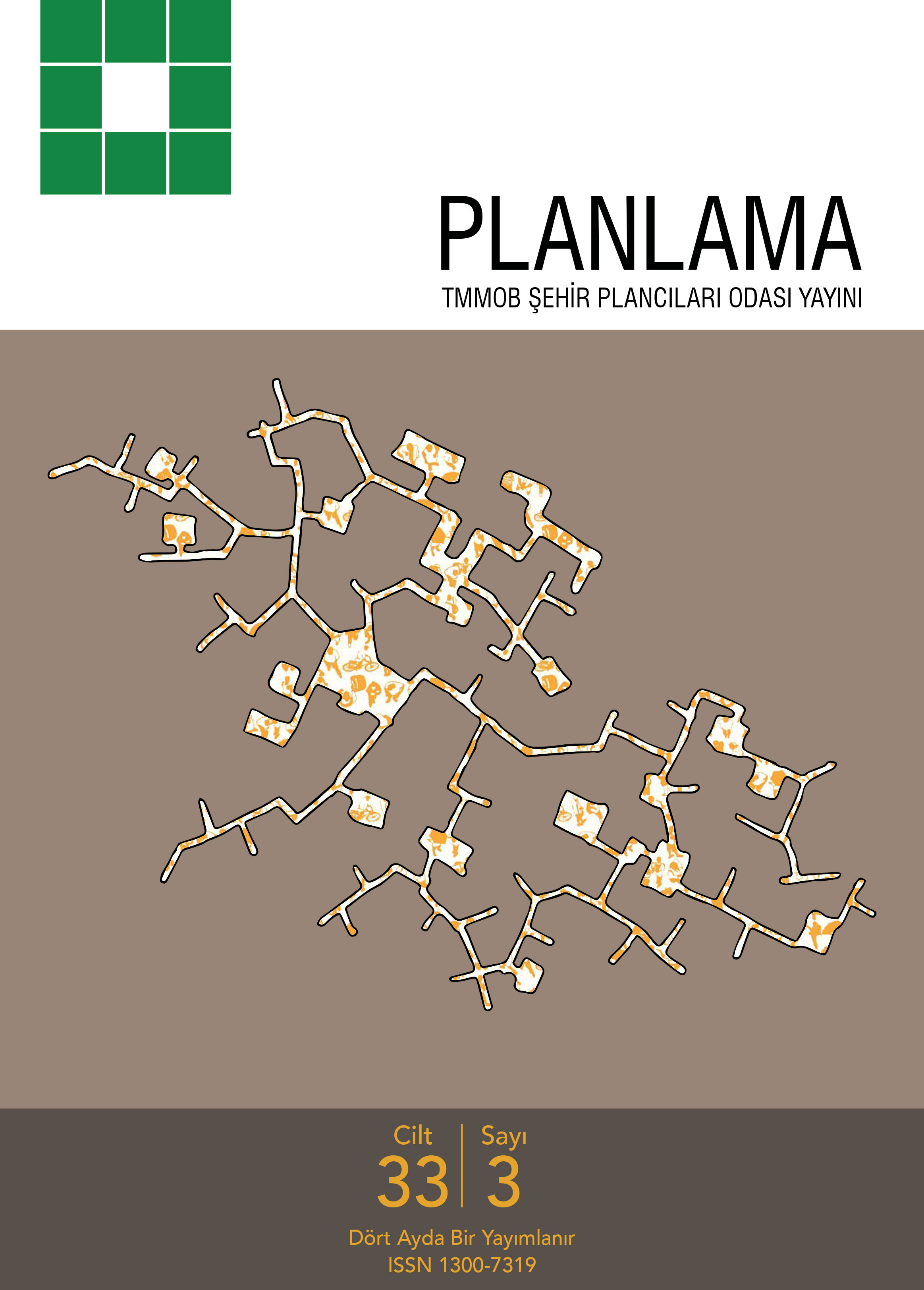Somut Olmayan Kültür Mirasının Sürdürülmesi İçin Üç Sektörlü Bir Model: İstanbul Tarihi Kent Merkezi için Kuyumculuk Mahallesi Önerisi
Ayşe Nur Ökten, Yiğit EvrenYıldız Teknik Üniversitesi, Mimarlık Fakültesi, Şehir Ve Bölge Planlama BölümüBu makalede İstanbul Tarihi Yarımadada, Kapalıçarşı ve çevresindeki hanlarda yoğunlaşmış ve o bölgenin kimliğini inşa etmiş kuyumculuk zanaatinin kendi faaliyet alanını ve mekanını, tabandan gelen katılımcı bir modelle nasıl canlandırabileceği konusu tartışılıyor. Yazıda, kuyumculuk sektöründeki küçük üreticilerin yoğunlaştığı bölge Kuyumculuk Mahallesi adıyla ele alınıp; çok yönlü bir kentsel canlandırma için buradaki sosyal sermaye üzerinden, çarşı dayanışmasının ve işbirliğinin yolları aranıyor. Zanaat Eksenli Canlandırma adıyla sunulan bu modelde, söz konusu alandaki esnafın yapı, ada veya bölge ölçeğinde çeşitli düzlemlerde örgütlenerek koruma, canlandırma ve gelişme projelerinin insiyatifini üstlenmesine uygun bir ortam hazırlamak için neler yapılabileceği tartışılıyor. Bu bağlamda bölgede dayanışma ve işbirliğini yönetecek STK niteliğinde bir işlemci kurum -Kuyumculuk Mahallesi Vakfı- öneri olarak sunuluyor. Bunun yanısıra model, tabandan gelen canlandırma politikalarının kapsamlı olmasını ve bölgede sosyal ve ekonomik gelişmeye öncelik verilmesini öngörüyor. Bu doğrultuda Kuyumculuk Mahallesinde sürdürerek canlandırma stratejilerinin yönetileceği, aynı zamanda eğitim, kültür ve sanat etkinliklerinin gerçekleştirileceği çok amaçlı bir merkez -Kuyumculuk Tasarım, Araştırma ve Kültür Merkezi- öneriliyor. Üçüncü olarak kiracı konumundaki zanaatkarın da bölgedeki projelerde söz sahibi olmasına olanak tanıyan bir düzenleme -Genişletilmiş Hak Sahipliği- model kapsamında tartışmaya açılıyor. Bu düzenleme ile bir yandan canlandırma modelinin tabandan ivmeli kimliği güçlendirilirken, diğer yandan canlandırma sürecinin etkisiyle bölgede yaşanabilecek olası bir soyulaştırma dalgasından kiracı zanaatkarın etkilenme riski azaltılmış oluyor.
Anahtar Kelimeler: kuyumculuk, zanaat, katılım, canlandırma, somut olmayan kültürel miras, üç sektörlü ortaklıkSafeguarding the intangible cultural heritage through a tri-sector model: the jewellery quarter in the Old City of Istanbul
Ayşe Nur Ökten, Yiğit EvrenYıldız Technical University, Faculty Of Architecture, Department Of City And Regional PlanningThis paper discusses the possibilities of reviving the traditional craftsmanship in its original, historic location through a bottom-up approach. The jewellery production in the Old City of Istanbul is clustered in the Grand Bazaar (Kapalicarsi) and its vicinity where the crafts characteristics has been embedded into the built environment. The traditions of production and urban life are merged in this part of the Old City. Therefore, the authors designate this specific area as the jewellery quarter and propose a tri-sector regeneration approach through which the artisans in the area can safeguard their craft and place relying on the local social capital. In this context, this paper proposes an Artisan-led Regeneration Model which allows craftsmen to initiate regeneration projects at various scales while relying on institutional support and guidance of local jewellers. The model assumes that collaboration and solidarity can be orchestrated by a non-governmental organization such as the Jewellery Quarter Foundation. Furthermore, the model assumes that a bottom-up regeneration policy should be compresensive and give priority to social and economic development in the area. Thus, a multipurpose center is proposed to serve as the headquarters of the regeneration where artistic, cultural, social, and educational activities as well as spatial improvemens can be administered. The third proposition of the model is to introduce tenant artisans as one of the rightful stakeholders into the legal system concerning urban operations. Including the tenant artisans into the institutional structure would reinforce the grassroots character of the regeneration process and diminish the risk of gentrification.
Keywords: jewellery making, craftsmanship, participation, regeneration, intangible cultural heritage; tri-sector partnershipSorumlu Yazar: Yiğit Evren, Türkiye
Makale Dili: Türkçe












